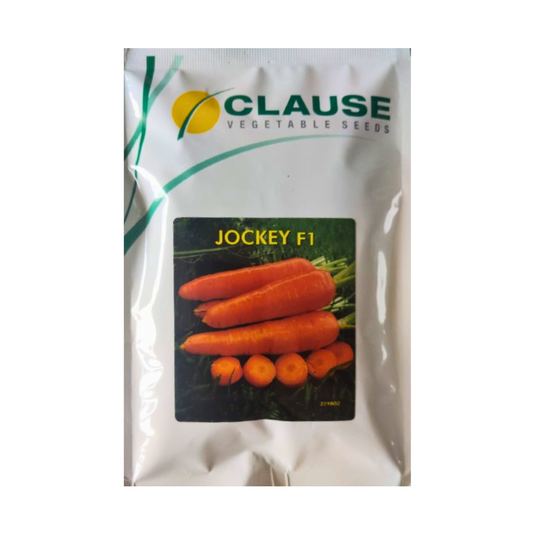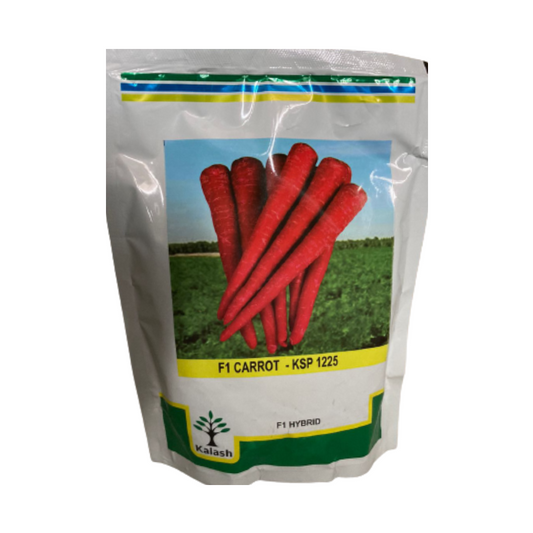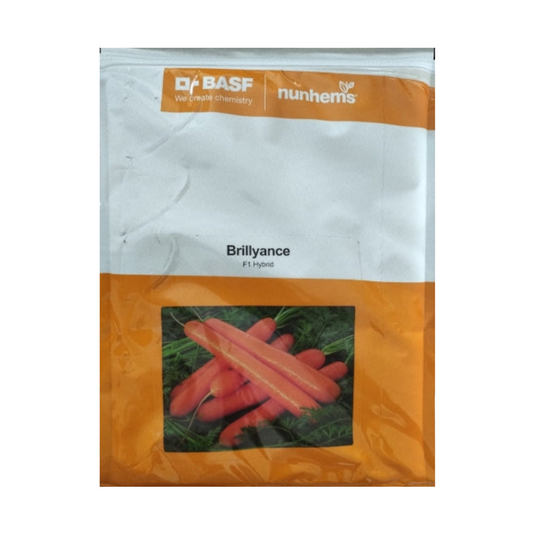-
 Sold out
Sold outJockey Carrot Seeds
Vendor:HM CLAUSERegular price Rs. 2,499Regular priceUnit price perRs. 4,640Sale price Rs. 2,499Sold out -

You Save Rs. 337
Shin Kuroda Improved Carrot seeds
Vendor:HM CLAUSERegular price Rs. 949Regular priceUnit price perRs. 1,286Sale price Rs. 949Sale -
 Sold out
Sold outZia Carrot Seeds
Vendor:HM CLAUSERegular price Rs. 2,999Regular priceUnit price perRs. 5,620Sale price Rs. 2,999Sold out -
 Sold out
Sold outZane Carrot Seeds
Vendor:HM CLAUSERegular price Rs. 2,999Regular priceUnit price perRs. 4,045Sale price Rs. 2,999Sold out -
 Sold out
Sold outSanjana Carrot Seeds
Vendor:HM CLAUSERegular price Rs. 3,999Regular priceUnit price perRs. 7,500Sale price Rs. 3,999Sold out -
 Sold out
Sold outNantindo Carrot Seeds
Vendor:HM CLAUSERegular price From Rs. 1,899Regular priceUnit price perRs. 2,850Sale price From Rs. 1,899Sold out -
 Sold out
Sold outJeeva 770 Carrot Seeds
Vendor:HM CLAUSERegular price Rs. 2,499Regular priceUnit price perRs. 4,225Sale price Rs. 2,499Sold out -
 Sold out
Sold outJai Carrot Seeds
Vendor:HM CLAUSERegular price Rs. 2,499Regular priceUnit price perRs. 4,225Sale price Rs. 2,499Sold out -
 Sold out
Sold outKK 77 Carrot Seeds
Vendor:WELCOME SEEDSRegular price Rs. 1,599Regular priceUnit price per -
 Sold out
Sold outKK 98 Carrot Seeds
Vendor:WELCOME SEEDSRegular price Rs. 1,599Regular priceUnit price per -
 Sold out
Sold outEarly Bharani-633 Carrot Seeds
Vendor:PAHUJA SEEDSRegular price Rs. 505Regular priceUnit price per -
 Sold out
Sold outKSP-1225 Carrot Seeds
Vendor:KALASHRegular price Rs. 615Regular priceUnit price per -
 Sold out
Sold outIndam Kuroda Carrot Seeds
Vendor:INDO AMERICANRegular price From Rs. 35Regular priceUnit price per -
 Sold out
Sold outCarrot Early Nantes Seeds
Vendor:INDO AMERICANRegular price From Rs. 40Regular priceUnit price per -
 Sold out
Sold outKuroda Carrot Improved
Vendor:TOKITARegular price Rs. 730Regular priceUnit price per -
 Sold out
Sold outKuroda Carrot Seeds
Vendor:TOKITARegular price From Rs. 750Regular priceUnit price per -
 Sold out
Sold outKuroda Carrot Seeds
Vendor:NAMDHARI SEEDSRegular price From Rs. 30Regular priceUnit price per -

You Save Rs. 821
Zubera Carrot Seeds
Vendor:HM CLAUSERegular price Rs. 3,799Regular priceUnit price perRs. 4,620Sale price Rs. 3,799Sale -
 Sold out
Sold outBrillyance Nantes Carrot Seeds
Vendor:NUNHEMSRegular price Rs. 4,900Regular priceUnit price per -
 Sold out
Sold outJK Kuroda Carrot Seeds
Vendor:JK SEEDSRegular price From Rs. 880Regular priceUnit price per -
 Sold out
Sold outSamson-196 Carrot Seeds
Vendor:KALASHRegular price From Rs. 290Regular priceUnit price per -
 Sold out
Sold outEarly Nantes Totem Carrot Seeds
Vendor:HM CLAUSERegular price Rs. 1,850Regular priceUnit price per -
 Sold out
Sold outNew Kuroda Carrot Seeds
Vendor:KAVERI SEEDSRegular price From Rs. 250Regular priceUnit price per -
 Sold out
Sold outNew Kuroda Carrot Seeds
Vendor:NONGWOORegular price From Rs. 765Regular priceUnit price per
Carrot Price List
| Product | Price |
|---|---|
| Jockey carrot seeds | Rs. 2,499 |
| Shin kuroda improved carrot seeds | Rs. 949 |
| Zia carrot seeds | Rs. 2,999 |
| Zane carrot seeds | Rs. 2,999 |
| Sanjana carrot seeds | Rs. 3,999 |
| Nantindo carrot seeds | Rs. 1,899 |
| Jeeva 770 carrot seeds | Rs. 2,499 |
| Jai carrot seeds | Rs. 2,499 |
| Kk 77 carrot seeds | Rs. 1,599 |
| Kk 98 carrot seeds | Rs. 1,599 |
| Early bharani-633 carrot seeds | Rs. 505 |
| Ksp-1225 carrot seeds | Rs. 615 |
| Indam kuroda carrot seeds | Rs. 35 |
| Carrot early nantes seeds | Rs. 40 |
| Kuroda carrot improved | Rs. 730 |
| Kuroda carrot seeds | Rs. 750 |
| Kuroda carrot seeds | Rs. 30 |
| Zubera carrot seeds | Rs. 3,799 |
| Brillyance nantes carrot seeds | Rs. 4,900 |
| Jk kuroda carrot seeds | Rs. 880 |
| Samson-196 carrot seeds | Rs. 290 |
| Early nantes totem carrot seeds | Rs. 1,850 |
| New kuroda carrot seeds | Rs. 250 |
| New kuroda carrot seeds | Rs. 765 |
| Ns 9905 f1 carrot seeds | Rs. 7,000 |
| Super kuroda carrot seeds | Rs. 185 |
Last Updated: April 11, 2025
























